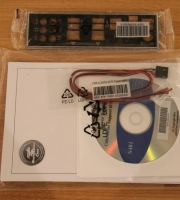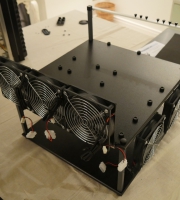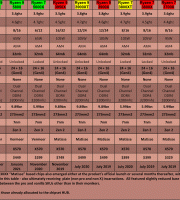


![]()
Well that was Fun wasn’t it? I had thought to present this entire article in a tapestry format and that the wonders of Photoshop CS4 might permit me to scale new heights of creativity. It didn’t, it just made me angry by continually crashing whenever I tried to save an image greater than 20000 pixels deep, ok, probably too deep, but it had to be that deep in order to incorporate the text which I kept having to shrink because of my inability to summarise.
All of which caused me to download a trial of Photoshop CS6, and waste precious life by making a backup of my entire hard drive before installing it on the off chance it might irretrievably hose my OS with scary corporate spyware that would be harder to remove than s**t from your shoe. It didn’t but that scarcely made things better because the interface was a drab dark grey making it much harder to see the tool bars and windows and worst of all, the bloody thing still CRASHED!!!
Many cynical, but discerning commentators on high brow graphical culture, insisted that the excessive pricing policy embraced by its two most ferocious forces, especially Nvidia, stemmed from the well healed enthusiast’s progressive penchant to harvest virtual currency, and the attempts of both companies to stimulate and satisfy it. With Bitcoin mining being an AMD dominated affair, it is difficult to substantiate such an assertion. Nvidia loyalists may have been second only to Apple’s in their patience for extortion but if bit coining had been truly on their brains, where would have been the sense in the green in risking defections by out pricing your deadliest rival so decisively, yet failing to approach, let alone surpass the powers of its equivalent solutions in this particular regard.
The statement would have been more easily justified if the interests of these affluent clients had extended to numerically-tortuous tasks of a critical and scientific nature, inclined to exploit the double precision cores present on the previous Titans. However, aside from folding@home, applications wholly dependent on floating point fortitude were as niche as….no, can’t think of anything.. Moreover, the first “in house” consumer solution ever to boast the subsequently common $1000 bail-bond, was the GTX 690, whose number crunching credibility was distinctly mediocre.
The Titan X is posed a similar paradox. In eliminating double precision as a feature, Nvidia had also compromised the chances of its formidable creation being a practical purchase for compute minded gamers, for whom such a product might even have represented a bargain when judged against established “professional” solutions such as those from their own “Tesla”range and AMD’s rival “Firepro” brand, all of which commanded three times the cash. Without those delectable DPUs , the Titan X was predisposed to compete core for core against opposition whose dollar to pixel ratios represented far greater value. The old cry of “to procure the best, you pay the most” didn’t hold up, because the “best” in real terms, was not “Big Maxwell”, but “Vast Vesuvius”.
In 2014, the R295x had romped resoundingly into the picture with its bounty set at a lofty $1499, considered by many on the day to be prohibitive until the Titan-Z resoundingly revealed the wonders of true exorbitance. By the time the Titan X emerged, AMD had slashed its demand to approximately to $699, while the Titan-Z remained over twice a dear and five times more scarce. This placed Nvidia apologists in an unenviable position. How to justify the acquisition of a $999 video card that, on the basis of net pixel profits, provided a conservative average some 20% less than that of a 30% cheaper alternative? If pricing had reflected performance, the 295X should have retailed at $1200 but in fact, could be obtained for close to half as much. How could even the greenest disciples avert their consciences from such a powerful and reasonable second choice, or prevent their eyes from weeping rose tinted tears. They certainly tried.